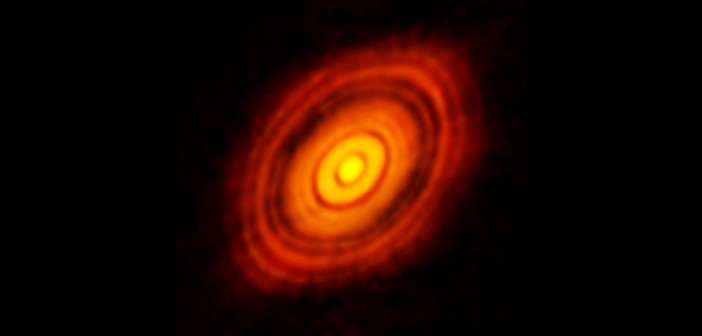Editor’s note: In these last two weeks of 2016, we’ll be looking at a few selections that we haven’t yet discussed on AAS Nova from among the most-downloaded papers published in AAS journals this year. The usual posting schedule will resume after the AAS winter meeting.
Gas Gaps in the Protoplanetary Disk Around the Young Protostar HL Tau
Published March 2016

The dust (left) and gas (right) emission from HL Tau show that the gaps in its disk match up. [Yen et al. 2016]
Main takeaway:
At the end of last year, the Atacama Large Millimeter/Submillimeter Array released some of its first data — including a spectacular observation of a dusty protoplanetary disk around the young star HL Tau. In this follow-up study, a team led by Hsi-Wei Yen (Academia Sinica Institute of Astronomy and Astrophysics, Taiwan) analyzed the ALMA data and confirmed the presence of two gaps in the gas of HL Tau’s disk, at radii of ~28 and ~69 AU.
Why it’s interesting:
The original ALMA image of HL Tau’s disk suggests the presence of gaps in disk, but scientists weren’t sure if they were caused by effects like gravitational instabilities or dust clumping, or if the gaps were created by the presence of young planets. Yen and collaborators showed that gaps in the disk’s gas line up with gaps in its dust, supporting the model in which these gaps have been carved out by newly formed planets.
Added intrigue:
The evidence for planets in this disk came as a bit of a surprise, since it was originally believed that it takes tens of millions of years to form planets from the dust of protoplanetary disks — but HL Tau is only a million years old. These observations therefore suggest that planets start to form much earlier than we thought.
Citation
Hsi-Wei Yen et al 2016 ApJL 820 L25. doi:10.3847/2041-8205/820/2/L25
